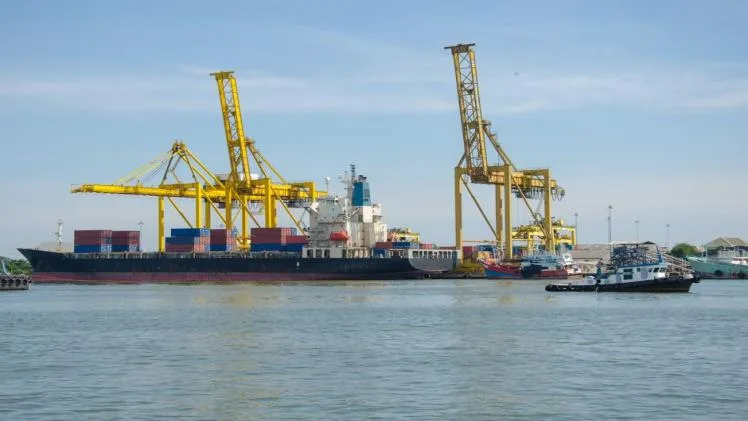Transshipment warehouses play a crucial role in supply chain management, particularly in logistics and fulfillment operations. They are typically large-scale facilities with ample storage space, equipped with various infrastructure and technologies to facilitate efficient handling of goods.
What is a transshipment warehouse?
A transshipment warehouse, also known as a transshipment warehouse or distribution center, is a facility specifically designed for the storage, processing, and distribution of goods or products for shipment. It serves as a central location where goods are received, sorted, stored, and prepared for transportation to their final destinations.
What is the difference between direct shipment and transshipment?
Direct shipment and transshipment are two terms used in logistics and transportation to describe different methods of moving goods between locations.
Direct Shipment: Direct shipment refers to a transportation arrangement where goods or products are moved directly from the point of origin to the final destination without being transferred or stored at intermediate locations. In this method, there is a single transportation leg from the seller or manufacturer to the buyer or end customer. The goods are typically loaded onto a single mode of transportation, such as a truck, ship, or plane, and transported without being unloaded or transferred along the way.
Transshipment: Transshipment, on the other hand, involves the transfer of goods from one mode of transportation or location to another before reaching the final destination. It occurs when goods are moved through an intermediate location, often a transportation hub or distribution center, where they are temporarily stored or transferred between different transportation modes. Transshipment can involve multiple legs of transportation, and the goods may be unloaded, sorted, and reloaded onto different vehicles or vessels during the process. The purpose of transshipment is to optimize transportation routes, consolidate cargo, or facilitate the movement of goods across different regions or transportation networks.
Number of Ports
Direct Shipment: In direct shipment, typically only two ports are involved: the port of origin and the port of destination.
Transshipment: Transshipment often involves multiple ports or intermediate locations where goods are transferred or temporarily stored before being forwarded to the final destination. This can include ports, terminals, or distribution centers.
Time Considerations
Direct Shipment: Direct shipment usually offers faster transit times as there are no intermediate stops or delays associated with transferring goods between different locations.
Transshipment: Transshipment may introduce additional transit time due to the need for handling and transferring goods at intermediate locations. Delays can occur during the sorting, reloading, and coordination process at these hubs.
It’s important to note that the specific cost implications and transit times for both direct shipment and transshipment can vary depending on various factors, including the nature of the goods, distance, transportation modes used, infrastructure efficiency, and the specific logistics network involved. Therefore, it’s advisable to consider these factors when determining the most suitable approach for a particular shipment.
6 Functions of a transshipment warehouse include
- Receiving: Incoming shipments from suppliers or manufacturers are received at the warehouse. This involves inspecting and verifying the contents of the shipment, checking for any damages or discrepancies, and updating inventory records.
- Storage: Goods are stored within the warehouse until they are ready for shipment. This may involve organizing products on shelves, racks, or pallets, utilizing efficient storage systems to maximize space utilization and accessibility.
- Inventory Management: Shipment warehouses typically employ inventory management systems to track and manage the stock levels of various products. This includes monitoring inventory levels, implementing inventory control measures, and ensuring accurate stock counts.
- Order Fulfillment: When orders are received, transshipment warehouses are responsible for picking, packing, and preparing the products for shipment. This process involves retrieving the ordered items from storage Kent, packaging them appropriately, and labeling them for identification.
- Shipping and Distribution: transshipment warehouses coordinate the transportation of goods to their final destinations. They work with shipping carriers or logistics partners to arrange for the delivery of packages, ensuring they are properly loaded, documented, and dispatched.
- Returns and Reverse Logistics: transshipment warehouses may also handle returns and manage the process of reverse logistics. This involves receiving returned items, inspecting them for quality or damage, processing refunds or replacements, and managing the return flow of goods within the supply chain.
Overall, a shipment warehouse serves as a vital hub for managing the movement of goods within the supply chain, from the point of receipt to the point of shipment. They facilitate efficient order fulfillment, inventory management, and coordination of shipping activities, ensuring timely delivery of products to customers or distribution channels.
How to reduce tra@nsportation costs for enterprises?
Reducing transportation costs is a common goal for many enterprises looking to optimize their logistics operations and improve profitability. Here are several strategies that can help reduce transportation costs:
- Optimize Route Planning: Efficient route planning can minimize mileage, fuel consumption, and overall transportation costs. Utilize route optimization software or tools to plan the most cost-effective routes that consider factors such as distance, traffic patterns, delivery schedules, and vehicle capacities.
- Consolidate Shipments: Consolidating multiple shipments into larger, full truckloads or containers can lead to cost savings. By maximizing the capacity of each shipment, businesses can reduce transportation costs per unit and eliminate empty space in vehicles or containers.
- Utilize Intermodal Transportation: Explore the use of intermodal transportation, which involves combining multiple modes of transport (e.g., truck, rail, ship) for long-haul shipments. Intermodal transportation can often provide cost advantages and efficiency gains compared to relying solely on one mode.
- Negotiate Freight Rates: Regularly review and negotiate freight rates with transportation providers. Establish strong relationships with carriers and leverage volume discounts or long-term contracts to secure more favorable pricing.
- Optimize Warehouse Operations: Improving warehouse efficiency can indirectly impact transportation costs. Streamline warehouse processes to reduce order processing times, minimize order errors, and ensure accurate inventory management. This helps avoid costly transportation delays or expedited shipments due to warehouse inefficiencies.
- Implement Load Optimization: Efficient load planning and optimization can maximize vehicle capacity utilization. Utilize load planning software or algorithms to determine the most efficient way to load goods onto trucks or containers, considering weight distribution, space utilization, and product compatibility.
- Explore Shipping Zones: Assess the feasibility of establishing regional or local distribution centers closer to customers. This can help reduce transportation distances and costs for serving specific areas, especially when dealing with high-demand regions.
- Opt for Freight Consolidation Services: Engage with freight consolidation services that combine shipments from multiple companies to achieve economies of scale. These services consolidate freight from various shippers, allowing for shared transportation costs and reduced expenses.
- Implement Supply Chain Collaboration: Collaborate with suppliers, customers, and partners to optimize the entire supply chain. Sharing information, forecasts, and demand data can improve planning accuracy, reduce inventory levels, and streamline transportation requirements.
How to track the transportation status of transit orders?
Tracking the transportation status of transit orders is essential to ensure visibility and keep customers informed about the progress of their shipments. Here are several methods commonly used to track transportation status:
- Tracking Numbers: Obtain tracking numbers or tracking IDs from the transportation provider or carrier handling the shipment. These unique identifiers are assigned to each shipment and can be used to track the status online.
- Carrier Tracking Websites: Visit the tracking websites of the transportation carriers involved in the shipment. Most carriers have dedicated tracking portals on their websites where you can enter the tracking number to get real-time updates on the shipment’s progress.
- Logistics Platforms: Utilize logistics platforms or transportation management systems (TMS) that provide tracking functionality. These platforms often integrate with multiple carriers and allow you to track shipments from different carriers in one centralized location. For example, CNStorm provides corresponding mobile applications to facilitate you to check logistics updates at any time.
- Mobile Apps: Many transportation carriers and logistics companies offer mobile apps that allow you to track shipments on your smartphone or tablet. Download the relevant app for the carrier handling the shipment and use the tracking number to access real-time tracking information.
- Automated Notifications: Set up automated notifications through email, SMS, or mobile apps to receive status updates for specific events in the transportation process. This can include notifications for when the shipment is picked up, in transit, out for delivery, or delivered.
- Customer Service: Contact the customer service department of the transportation provider or logistics company for updates on the transportation status. They can provide real-time information on the whereabouts of the shipment and address any concerns or issues.
- Electronic Data Interchange (EDI): For businesses with integrated supply chain systems, EDI can enable automatic exchange of shipment status updates between the transportation provider’s system and the recipient’s system, ensuring seamless tracking and visibility.
- GPS Tracking: In some cases, particularly for valuable or high-priority shipments, GPS tracking technology can be utilized. This allows real-time tracking of the shipment’s location using GPS-enabled devices or trackers.
It’s important to note that the availability and level of tracking information may vary depending on the transportation provider, carrier, or logistics company involved. Some may provide more detailed tracking updates, while others may have limited visibility. It’s advisable to communicate with the transportation provider or carrier to understand the available tracking options and choose the most suitable method based on your specific needs and the capabilities of the service provider.



